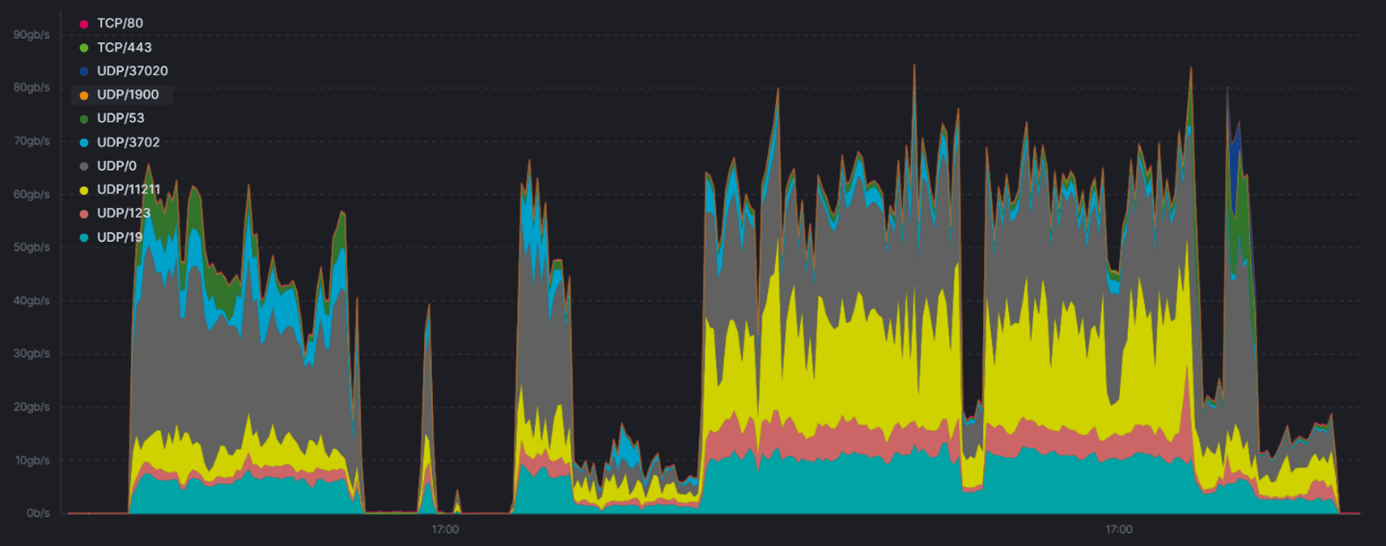Content

The DDoS landscape is constantly evolving. Cybercriminals are well aware of the latest technological developments and use them to their advantage. The emergence of Artificial Intelligence (AI) in the cybercrime space is no exception, and it presents completely new challenges to organizations and companies that find themselves in the crosshairs of these attackers.
DDoS attacks become significantly smarter and therefore considerably more dangerous once AI is included. To effectively combat these attacks, implemented defense measures must also constantly evolve.
AI-based attacks require an AI-based defense
At Link11, we have a range of tools and strategies to deal with the DDoS attacks that our customers constantly face, including our proprietary artificial intelligence-based platform. The AI analyzes and responds to DDoS attacks in real time, ensuring maximum accuracy in detection and lightning-fast mitigation of attacks.
The Link11 AI platform is constantly being developed and improved in order to stay one step ahead of cybercriminals. However, this raises the question: how do attackers use AI in DDoS cases and what can be done about it?
Artificial intelligence can be used in a variety of ways in the event of an attack
Although AI is a neutral tool in itself, it can play various roles in DDoS attacks, ranging from increasing its effectiveness to avoiding detection of the attack. Basically, a DDoS attack aims to flood a target system, network or service with data. The result is either that performance suffers massively or, in the worst case, the service is no longer available to users at all.
Below are some of the ways in which AI can be used to achieve this criminal approach:
- Automated attack orchestration
AI algorithms can be used to automate the control of DDoS attacks. Machine learning is used to analyze network traffic patterns and adapt attack strategies in real time. This makes it difficult for traditional security measures to detect and mitigate the attack.
An example that we recently observed is illustrated in the graph below, which shows a 14-day attack that one of our customers experienced. The graph only shows the top 10 attack vectors; in reality, there were over 50 different attack vectors, which speaks to the orchestration/automation required to carry out such an attack over such a long period of time:
- Machine learning to differentiate traffic
Attackers can use machine learning to mimic legitimate traffic more effectively. With such imitation, it becomes more difficult for security systems to distinguish between malicious and genuine requests. Machine learning models can be trained that are able to generate deceptively real traffic patterns. This traffic resembles normal user behavior and is very difficult for defense mechanisms to detect.
- Adaptive attack strategies
AI algorithms can adapt the attack strategy based on the target’s defenses. For example, if a target uses defensive techniques, the AI can dynamically adapt the attack vectors and patterns to evade these defenses (as described in point 1).
- IoT botnets
IoT devices are often insufficiently protected and are therefore easily compromised. Compromised devices can be used to expand powerful botnet networks for DDoS attacks (e.g. Mirai botnet attacks of 2016). AI algorithms can be used to coordinate these botnets more efficiently and generate more sophisticated attack patterns.
- Bypassing security measures
AI can also be used to investigate and bypass certain security measures, such as next-gen firewalls and intrusion detection systems. This makes it easier for attackers to find and exploit vulnerabilities and weaknesses in the target’s defenses.
Rely on modern technology for protection
Defenses that operate without artificial intelligence are unable to keep up with ever-changing modern attack patterns. Today’s cybersecurity means that defenses must keep pace with attackers’ strategies – at all times. Adequate defense is more important than ever for companies, as AI is increasingly involved in a variety of attack scenarios.
However, organizations that do not yet have DDoS protection with built-in AI capabilities should incorporate it sooner rather than later to avoid downtime due to a greatly increased DDoS risk.
At Link11, we know that cybercriminals are evolving and becoming more sophisticated. We focus on continuously improving our in-house AI platform to address this changing threat landscape. Our automated technology is always up-to-date and prepared for any attack scenario. This means our customers are protected around the clock against even the most advanced and dangerous DDoS attacks.
If you have any questions about AI-supported attack threats and an effective protection solution, our security experts will be happy to help you at any time.

